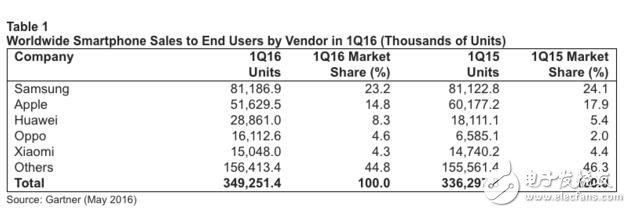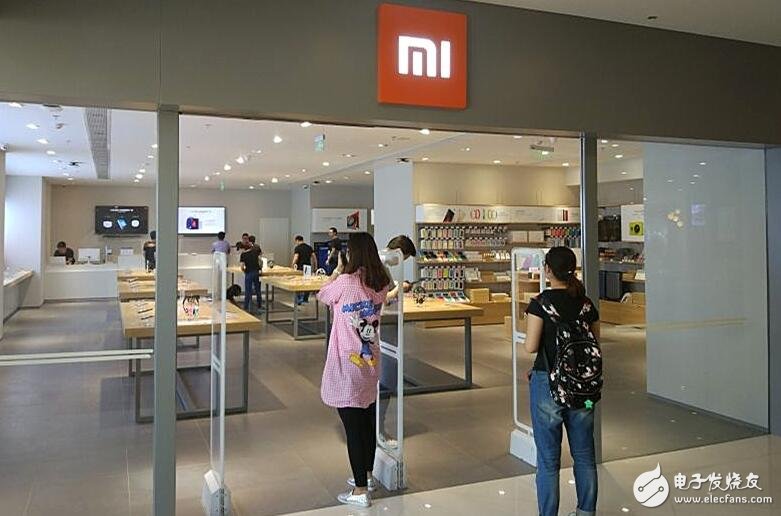At 8 o'clock on the evening of October 17, the Xiaomi Home of Zhongguancun Street in Haidian District, Beijing is still in operation. On October 13, Xiaomi, founder, chairman and CEO of Xiaomi Technology, said at the 2016 China E-Commerce Development Summit that Xiaomi should not be classified as a “mobile phone companyâ€. Xiaomi is also an e-commerce platform, but only sells its own. product. Lei Jun also revealed that in the next five years, Xiaomi plans to open 1,000 "millet homes" and strive to achieve a single store revenue of 100 million yuan.
Statistics show that in the first quarter of 2016, China's smartphone shipments, Xiaomi ranked fifth. According to industry insiders, Xiaomi Dongshan has had a lot of difficulties. The fundamental reason is that the popularity of the Internet has passed, and Xiaomi has never been able to complete the transformation from a marketing-oriented enterprise to a technology-oriented enterprise.
Xiaomi mobile phone sales encounter Waterloo
Since the establishment of Xiaomi Technology in 2010, the “Internet mobile phone†marketing model has been used for the first time. The sales of Xiaomi mobile phones have increased several times every year. Xiaomi is also considered to be the “breaker†of the traditional model. In 2014, Xiaomi's mobile phone sales exceeded 60 million units. According to IDC data, Xiaomi ranked first in 2014 with a market share of 12.5% ​​of smartphone shipments. At the end of 2014, Xiaomi completed a new round of financing with a total financing of US$1.1 billion and a company valuation of US$45 billion.
From 2014 to 2015, the pattern of the domestic mobile phone market has already shown the situation of Huawei and Xiaomi fighting for hegemony. However, in 2015, Xiaomi’s high growth suddenly stopped, sales of 70 million, failed to complete the expected sales of 80 million to 100 million. aims.
In 2016, the domestic mobile phone market gradually became saturated, and Xiaomi was deeply mired in the siege of domestic mobile phone manufacturers. Xiaomi, who has always been known for marketing, took advantage of the east wind of the Internet. At this moment, the east wind weakened and Xiaomi Company was exhausted. The OPPO, vivo and Huawei, which focused on R&D, have risen rapidly.

The Ganter report shows that the millet mobile phone market declined in the first quarter of 2016 and is now in fifth place.
According to IDC statistics, in the first quarter of 2016, China's smartphone shipment champion is no longer Xiaomi. Xiaomi has been surpassed by Huawei, OPPO, vivo and Apple, ranking only fifth. In the second quarter, Xiaomi's smartphone sales were about 10.5 million units, down 38.4% year-on-year. At the same time, Xiaomi's competitors OPPO and vivo have grown by leaps and bounds, with year-on-year growth of 124.1% and 74.7% respectively. IDC pointed out that the failure of Xiaomi Company lies in the lack of marketing.
Industrial economic observer Liang Zhenpeng said that the current market share of Xiaomi mobile phone is not as high as before, mainly due to the slow development of the market capacity of China's smart phone industry. In 2011, when Xiaomi entered the smart phone field, the smart phone market was explosive. Growth, and now the competitors of Xiaomi mobile phones are getting stronger and stronger, and they have also taken away the market share of Xiaomi.
Liang Zhenpeng believes that after the product structure of the domestic smart phone market is gradually transformed and upgraded, the process quality level of Xiaomi mobile phone products is gradually improving, but it still highlights the high configuration, low price and high cost performance advantage, and there are certain competitive advantages in competitive enterprises. The degree gap, such as Huawei's Leica lens, vivo mobile phone fast charging function, OPPO camera phone concept, consumers increasingly need differentiated technology advantages of products, but Xiaomi mobile phone does not grasp this market opportunity.
“The transformation to technology-led enterprises has never been completedâ€
Although Xiaomi is still controversial, Lei Jun still seems full of fighting spirit. According to media reports, Lei Jun revealed in his internal speech in July this year that Xiaomi is in a low valley. This year, the supply chain is “extremely out of stock†for three months, but he took over the mobile phone. After the supply chain, it is expected to rebound soon.
Faced with the brutal market competition, Xiaomi chose to expand the offline channel. Lei Jun said that the future sales channel of Xiaomi Mobile will shift from online marketing to physical stores, and Xiaomi Home (Xiami Direct Center) will expand vigorously. The goal of Xiaomi Home is to sell 50 million yuan per month. Now the highest store can do 1.43 million yuan a day.
Recently, Lei Jun said in an interview that Xiaomi will open two or three hundred offline Xiaomi home retail stores next year. By 2020, Xiaomi will open 1,000 physical stores and strive to achieve a single store revenue of 100 million yuan. These stores will make it easier for consumers to access and experience Xiaomi's products.

Xiaomi Home has three physical stores in Beijing. On the evening of October 17, the Beijing News reporter went to the Xiaomi Home in Zhongguancun (8.580, 0.12, 1.42%), Haidian District, Beijing. It was 1 hour after work. There are also customers who are shopping for mobile phones. Unlike traditional Apple and Samsung mobile phone stores, in addition to laptops, mobile phones and other electronic products, there are bracelets, patch panels, alarm clocks, rice cookers, luggage and leisure bags.
Ptfe Sheet Vietnam,Ptfe Porous Sheet,Ptfe Sheet Plate,Ptfe Sheet Weight
Cixi Congfeng Fluorine Plastic Co.,Ltd , https://www.cfptfeseal.com